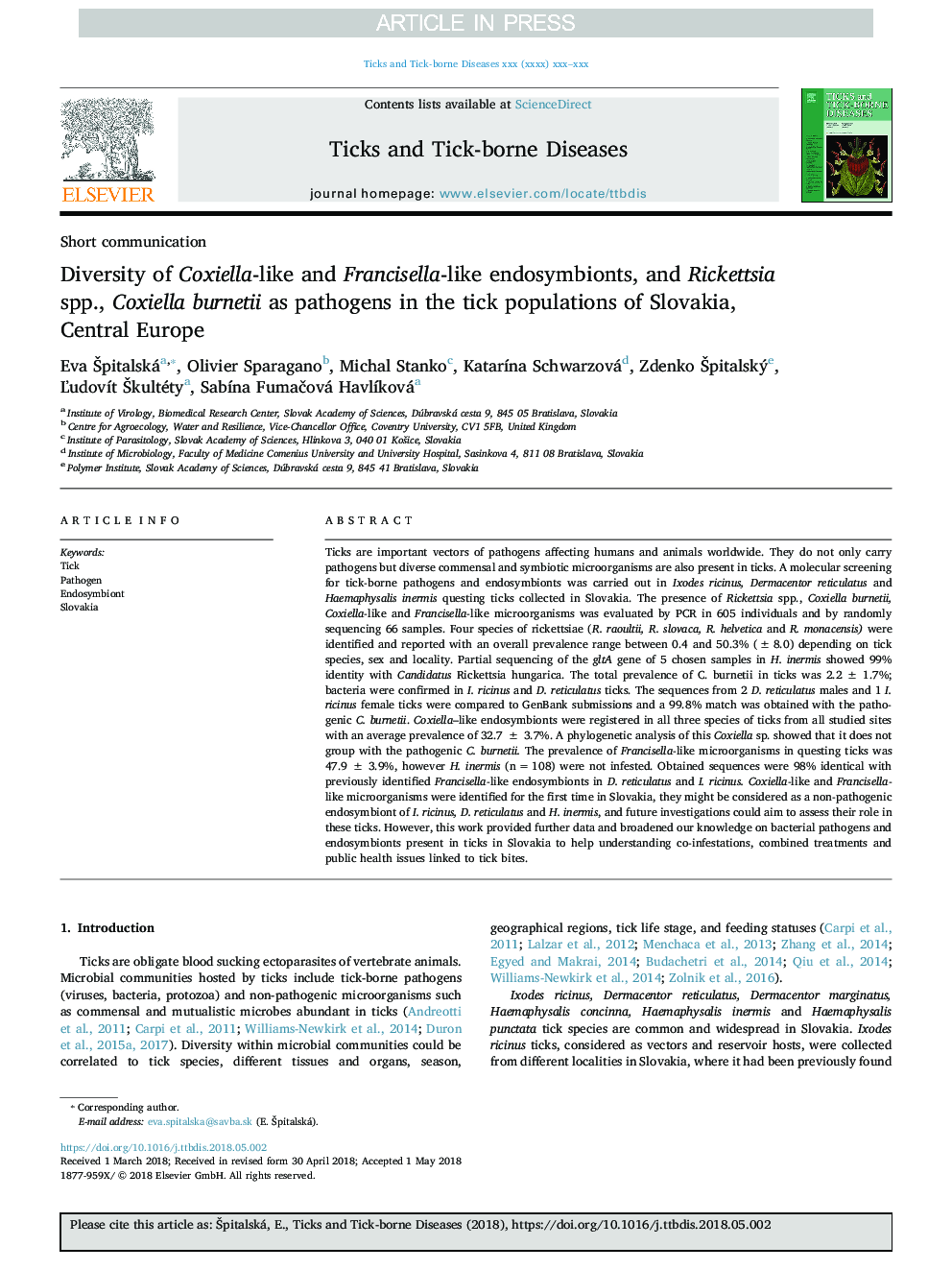| Article ID | Journal | Published Year | Pages | File Type |
|---|---|---|---|---|
| 8507049 | Ticks and Tick-borne Diseases | 2018 | 5 Pages |
Abstract
Ticks are important vectors of pathogens affecting humans and animals worldwide. They do not only carry pathogens but diverse commensal and symbiotic microorganisms are also present in ticks. A molecular screening for tick-borne pathogens and endosymbionts was carried out in Ixodes ricinus, Dermacentor reticulatus and Haemaphysalis inermis questing ticks collected in Slovakia. The presence of Rickettsia spp., Coxiella burnetii, Coxiella-like and Francisella-like microorganisms was evaluated by PCR in 605 individuals and by randomly sequencing 66 samples. Four species of rickettsiae (R. raoultii, R. slovaca, R. helvetica and R. monacensis) were identified and reported with an overall prevalence range between 0.4 and 50.3% (±8.0) depending on tick species, sex and locality. Partial sequencing of the gltA gene of 5 chosen samples in H. inermis showed 99% identity with Candidatus Rickettsia hungarica. The total prevalence of C. burnetii in ticks was 2.2â¯Â±â¯1.7%; bacteria were confirmed in I. ricinus and D. reticulatus ticks. The sequences from 2 D. reticulatus males and 1 I. ricinus female ticks were compared to GenBank submissions and a 99.8% match was obtained with the pathogenic C. burnetii. Coxiella-like endosymbionts were registered in all three species of ticks from all studied sites with an average prevalence of 32.7â¯Â±â¯3.7%. A phylogenetic analysis of this Coxiella sp. showed that it does not group with the pathogenic C. burnetii. The prevalence of Francisella-like microorganisms in questing ticks was 47.9â¯Â±â¯3.9%, however H. inermis (nâ¯=â¯108) were not infested. Obtained sequences were 98% identical with previously identified Francisella-like endosymbionts in D. reticulatus and I. ricinus. Coxiella-like and Francisella-like microorganisms were identified for the first time in Slovakia, they might be considered as a non-pathogenic endosymbiont of I. ricinus, D. reticulatus and H. inermis, and future investigations could aim to assess their role in these ticks. However, this work provided further data and broadened our knowledge on bacterial pathogens and endosymbionts present in ticks in Slovakia to help understanding co-infestations, combined treatments and public health issues linked to tick bites.
Keywords
Related Topics
Life Sciences
Agricultural and Biological Sciences
Animal Science and Zoology
Authors
Eva Å pitalská, Olivier Sparagano, Michal Stanko, KatarÃna Schwarzová, Zdenko Å pitalský, ĽudovÃt Å kultéty, SabÃna FumaÄová HavlÃková,
